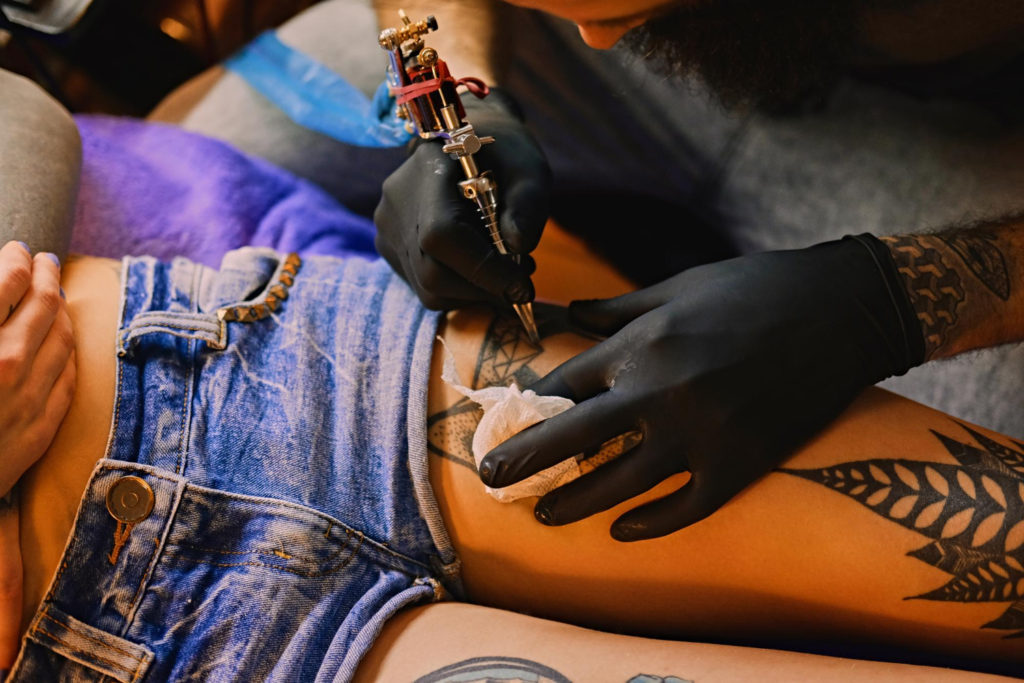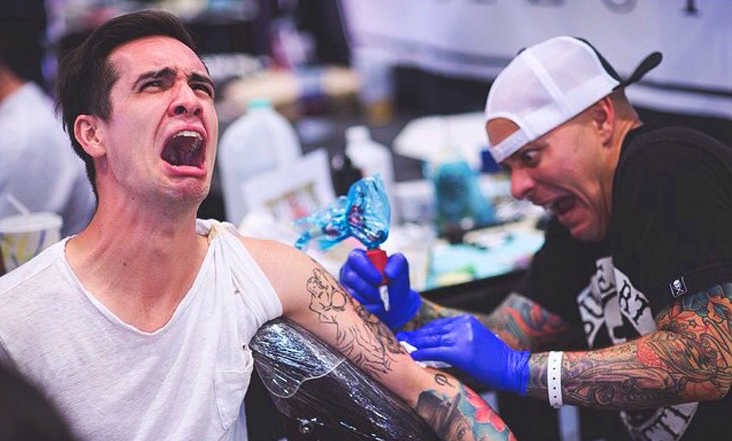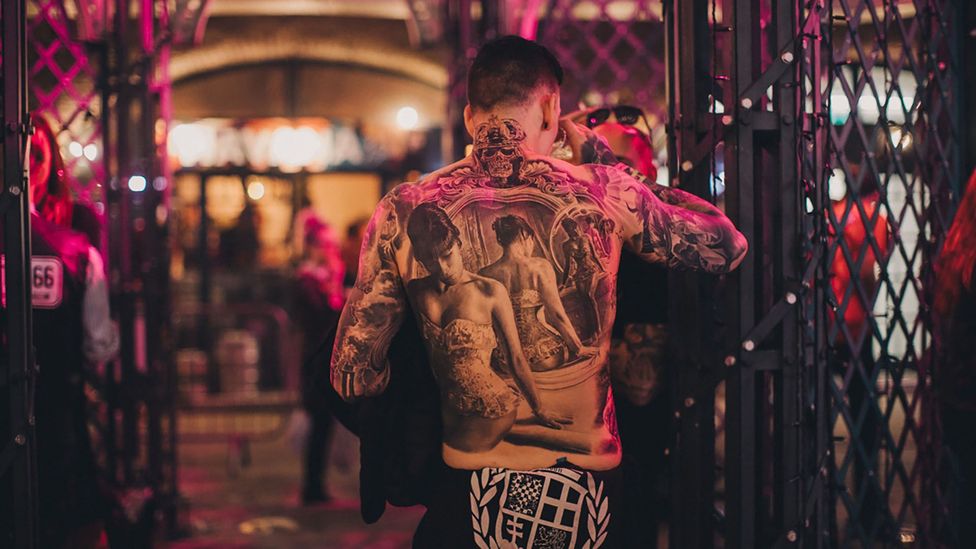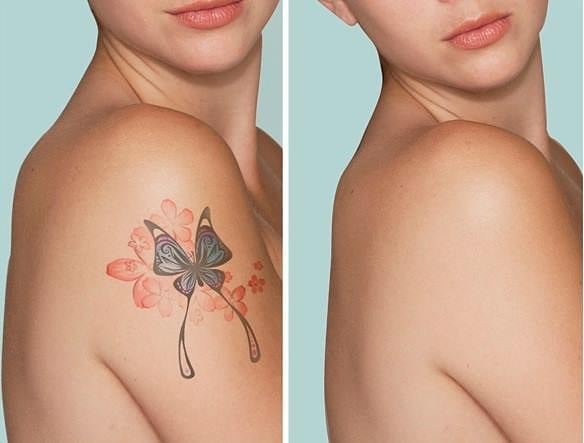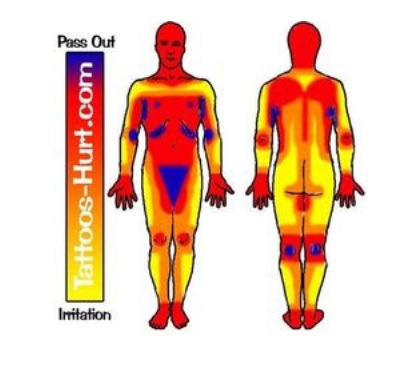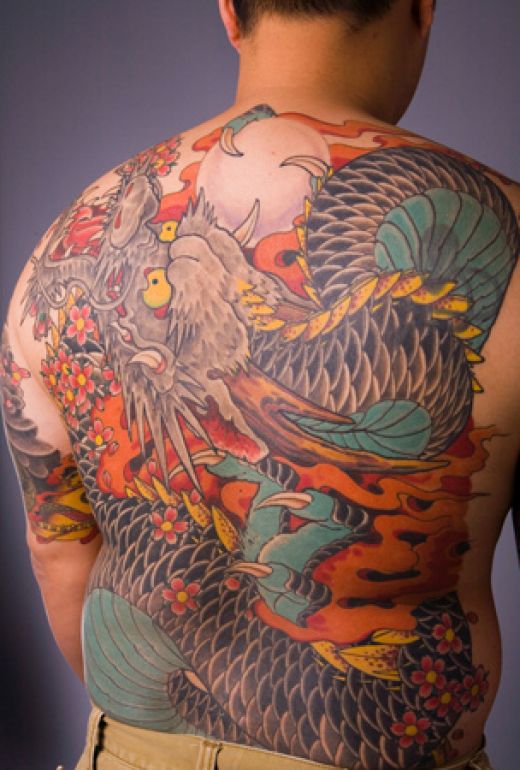In America, when we say “tattoos” many of us envision a very specific art style. That style usually includes a number of nautical designs including anchors, compasses, stars, and ships, to name just a few of the most common.
The reason we recall these images when we think of American traditional tattoos and tattoo art is for two distinct reasons. The first is because those are the symbols used by early tattoo artists who were often themselves sailors. The second is because in American culture, tattooing has historically been a heritage art; a tradition passed down from a teacher to a student.
Though the designs have been modified over recent decades, American traditional tattoos remain a distinct and instantly recognizable style of tattoo art. How so? You’ll learn in a bit.
American Traditional Tattoos & Their History
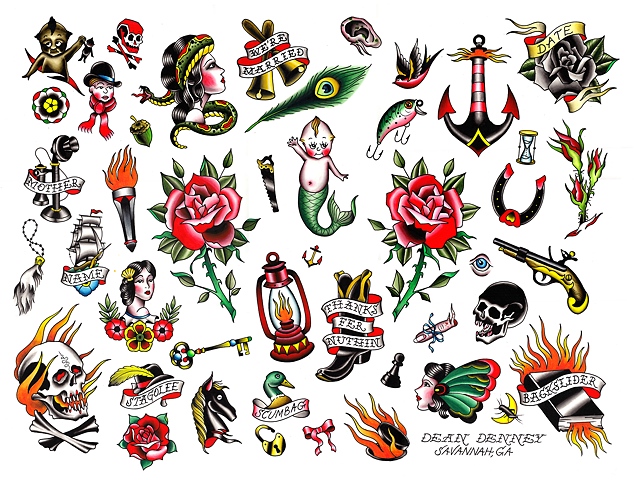
An example of traditional tattoo flash art, one of the primary ways the style was proliferated in the late 19th through most of the 20th century.
Westerners can trace their first contact with the art of tattooing all the way back to Captain Cook’s expedition of the South Pacific.
Cook encountered the tattooed cultures of Samoa, Polynesia, and the Maoris of New Zealand. All of these cultures were prominently tattooed. The sailors that were with Cook were fascinated by this art form and brought it back with him to Europe. There’s a lot more to that story, but it’s not the purpose of this post. For those who are interested, check out Cook’s story here.
Essentially, sailors sought to tattoo themselves with images that had meaning to them, as opposed to the traditional designs of the natives from who they had learned the practice. As the sailors had learned from tattoo artists in primitive cultures, they would later teach their own apprentices. The practice went on for some time before undergoing any great change.
The style of tattooing used by these sailors is referred to as British Naval or British Traditional style. They were characterized by very simple, somewhat crude designs and revolved largely around their lives as sailors, but would occasionally include elements of their personal lives.
It was during the civil war that American traditional tattoos really began to stand out as their own distinct style. In 1870 Martin Hildebrandt, a German-American tattoo artist who’d made his living tattooing members of both the Confederate and Union armies during the civil war opened the first known tattoo parlor in New York City, NY. When the invention of the electric tattooing machine by Samuel O’Reilly occurred in 1891, tattooing in America really took off.
The Birth of American Style
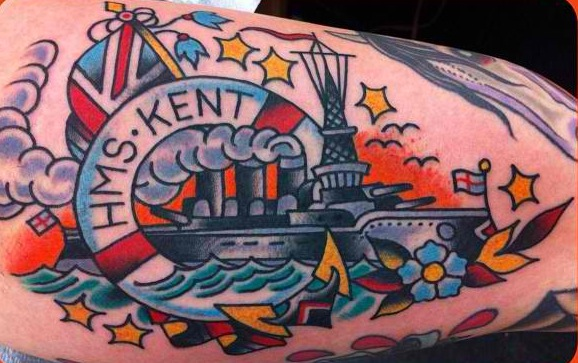
Tattoo art in America before the invention of the electric tattoo machine was largely based on military service, religion, and love. The soldiers tattooed in the Civil War often had patriotic or military images tattooed on them, as well as graphic representations of their love for the women they left behind.
Religious tattoos of crosses, praying hands, rosaries, and other religious iconography were also common. Reproductions of famous fine artworks depicting religious scenes also existed but were far less common — often seen only on circus performers whose tattoos were their trade. These themes built the basis for tattoo culture in America and formed the cornerstone of American traditional tattoos.
After the invention of the tattoo machine, tattoo culture in America expanded rapidly. The Spanish-American War was on and some estimates say that at the time over 80% of enlisted men were tattooed. Demand for tattoos had become so great that artists had a hard time meeting the demand. This presented an opportunity for less-skilled tattoo artists to get into the business, but this of course created a new problem.
They now had tattoo “artists” who were unskilled at drawing. To solve this problem, flash sheets were created to provide unskilled artists a base to work from. Flash tattoo artists often created designs that were common to a specific locality, but as demand grew a small handful of artists became prominent distributors of these flash sheets, which were available via mail order catalog, leading to a homogenized style. The homogenization of the style is how American Traditional tattoos were born.
You’ll also notice how the American tattooing tradition sticks closely to the armed forces, particularly the Navy. Just as Captain Cook’s naval voyage introduced him and his crew to the tattoo cultures of the South Pacific, during the turn of the 20th century Japan had become a popular port frequented by American sailors. These sailors then encountered the Japanese style of tattooing, which they then spread.
Still, among Americans, American Traditional tattoos remained the most popular. During WWII artists such as the famous Sailor Jerry continued to propagate and shape the style.
Traditional American vs Modern American Traditional Tattoos — What’s the Difference?
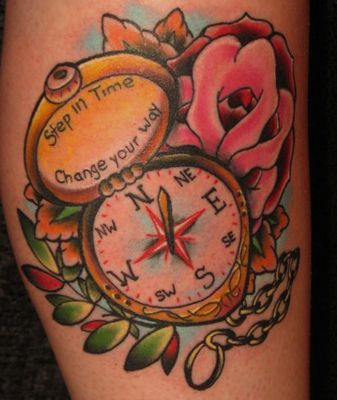
By Josh Ritchey @ Heroes and Ghosts
While flash tattoos still exist and are still used to some degree in modern American tattoo culture, we’ve been leaning towards a strictly custom tattoo style since the turn of the 21st century.
That’s not to say that American Traditional tattoos are dying out. They still serve as inspiration for custom tattoo work. The artwork itself conveys a sense of tradition, heritage, and importance while the themes used in American Traditional tattoos are still highly relevant today. Modern American Traditional tattoo art keeps the same visual style as classic American Traditional but incorporates a broader scope of themes and design elements.
But what’s the difference between Traditional American and Modern American Traditional Tattoo?
The main difference between American Traditional tattoos and Modern Traditional tattoos is that many modern or custom American Traditional tattoos are more personalized, but maintain the use of the traditional style and design. These tattoos often employ more cultural references including musical, theatrical, and literary. While there isn’t a readily available declaration of the design elements that are common to American Traditional tattoos, it’s pretty safe to say that fine line work, simple color palettes, and uncomplicated designs are hallmarks of the style.
Some of the examples below demonstrate the modern traditional style, but if you’d like to learn more and see more examples, we have another great article on how Richmond, VA is influencing the style.
The Meaning of American Traditional Tattoos
One of the great things about American traditional tattoos, or Old school tattoos as they are sometimes called, is how accessible the meaning of a tattoo is to other people. This tattoo style utilizes designs that can often be taken at face value or are accompanied by “rockers” — ribbons or bands that contain a script that often spells out meaning, express a sentiment, or contain a motto.
That being stated, many American traditional tattoos have meanings that are steeped in tradition and often blended with or borrowed from other cultures. We’ll go through some of the more common traditional tattoo designs in-depth.
Traditional Anchor Tattoos
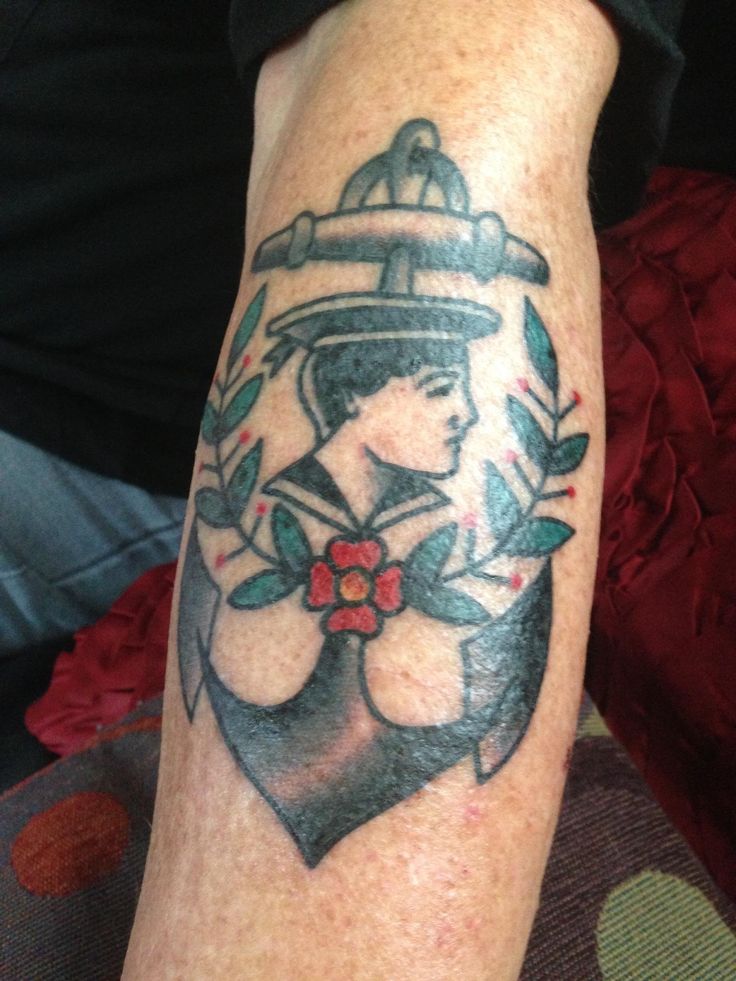
The “deeper meaning” of the traditional anchor tattoo doesn’t go much deeper than a simple metaphor. Hearkening back to the seafaring roots of the style, an anchor represents a tether or something that steadies the ship to keep it from drifting. It is common to see anchors accompanied by the name of a loved one or by a slogan or motto by which the wearer lives their life. The anchor represents security.
Nautical Star Tattoos
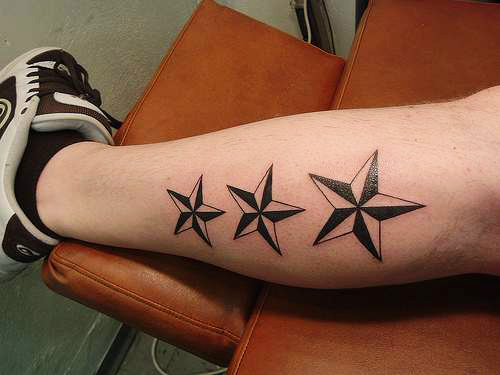
The nautical star, a five-pointed, two-toned star, has largely become purely aesthetic. Traditionally, the nautical star tattoo was a maritime symbol associated with navigation. The nautical star tattoo can express the wearer’s desire to get through life safely or to return safely from journeys that take them away from home.
Nautical stars worn on the chest or front shoulders may make reference to the lights on a boat–if one star is red and the other is green or blue, it references the starboard and port sides of a ship. In sailing, if a ship can see both the port and starboard lights of another boat, it means they are on a collision course and the ship must give way. In tattoo metaphor, this tattoo suggests that others must “give way” to the wearer.
Traditional Ship Tattoos
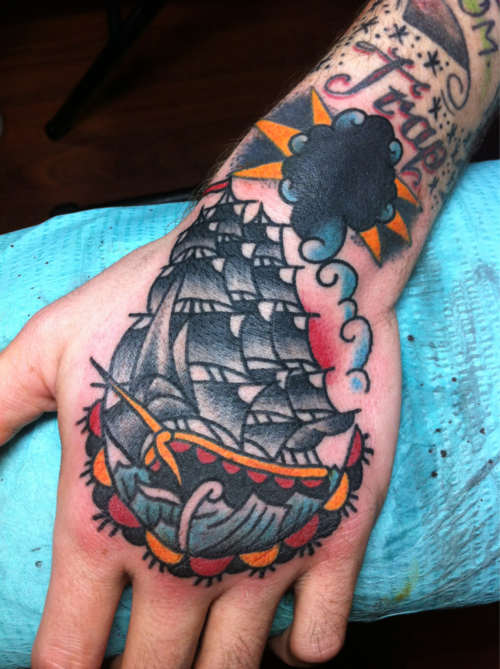
By Josh Stephens @ Hold It Down Tattoo
The meaning of the traditional ship tattoo is a pretty wide-open metaphor. The ship typically represents the wearer, while the water on which it sails represents life. Waters may be depicted as smooth or stormy and the scene is often accompanied by rockers spelling out some core belief of the wearer.
In a ship tattoo, the sails may be presented as full, slack, or torn. This is a metaphor for how the wearer feels their course in life has been, or how they’d like it to be. Full sails meaning a life that is “easy sailing”, slack sails meaning the wearer is “adrift” or without direction, and torn sails meaning that the wearer believes they have had a tough life and lived through “stormy waters”.
Traditional Rose Tattoos
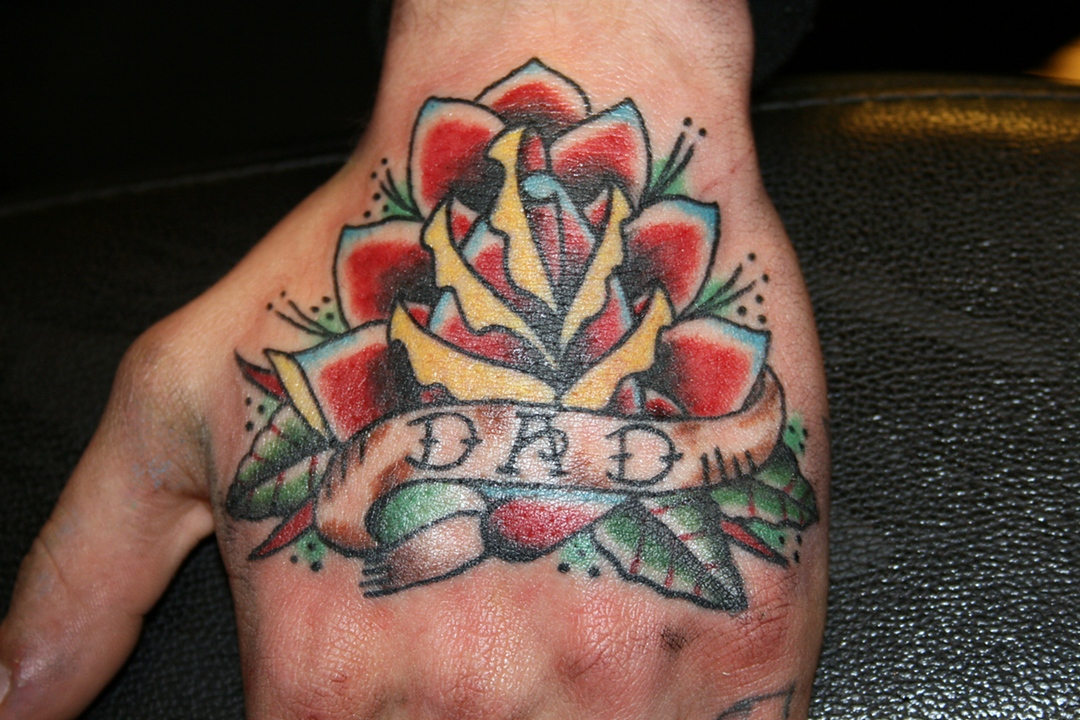
By Ash Swain @ 212 Tattoo
The rose tattoo is common to many tattoo cultures who base their art on images rather than designs. Much like the Japanese meaning, the rose in American Traditional tattoo art represents a very wide range of things and the way it is depicted (with or without thorns, open, closed, or partially open) can change that meaning.
The rose tattoo can also represent the feminine and in the life of a sailor, it commonly referred to a woman close to the wearer’s heart such as their mother, wife, or girlfriend. Read more about the meaning of the rose and other flower tattoos on our Flower Tattoos Meanings page.
Traditional Swallow Tattoos
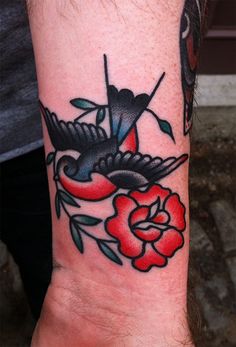
By Mike Adams @ Hold It Down Tattoo
The swallow tattoo actually derives from the British sailing tattoo tradition. The swallow depicted in the tattoo is traditionally a Barn Swallow, common to the British Isles.
In the early days of sailing, British seamen had the swallow tattooed to show their sailing experience–each swallow was said to represent 5,000 nautical miles worth of sailing. It is also thought that since the Swallow returns to the same place to nest every year, the tattoo was like a good luck charm for ensuring a safe return from their journey.
The idea of the swallow returning also leads to another interpretation: Loyalty. The swallow tattoo suggests that the wearer will always return to, or be loyal to, their friends and family. It also has a connection to turn of the century street fighting in England and Scotland when worn on the back of the hand.
To further the symbolism of the swallow tattoo for sailors, it was also believed that a sailor who died at sea would have his soul carried home (or to heaven) by these birds. In both instances, the traditional swallow tattoo symbolizes a safe return from a journey.
Traditional Dagger or Knife Tattoo
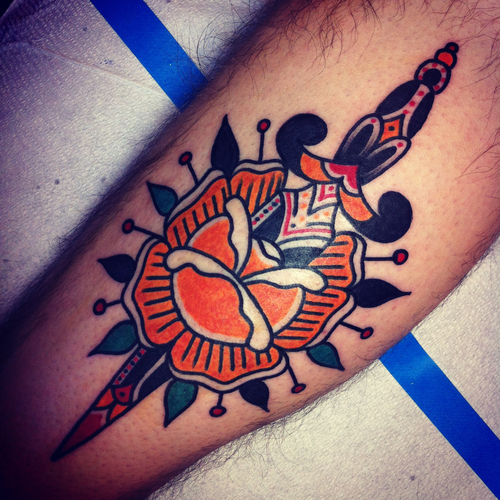
Done by Josh Stephens @ Hold It Down tattoo
The image of the knife or dagger is one that appears in many cultures. In the tattoo arts, it was first used in the British sailing tradition which of course was carried into the American Traditional tattoo style.
The dagger represents many things. In modern American culture, we associate it with death, danger, and ferocity. The traditional dagger tattoo was common among soldiers in the Army and Marines from WWII on. For them, it not only symbolized death, but life–as well as the tool by which they lived. Dagger tattoos often symbolize quickness, tenacity, or death at the hands of another.
There are a number of variations on the traditional dagger tattoo, most of which combine the dagger with other design elements such as hearts, skulls, flowers, or “wounds”. A dagger paired with a heart often refers to the wearer having experienced a broken heart or lost love. A dagger paired with a traditional skull means protection or bravery.
Some traditional tattoos feature a dagger through a panther’s head (or tiger, in some cases). The meaning of these tattoos is generally derived from the two individual elements, the dagger, and the animal. Panther tattoos represent subtle strength or aggression.
Traditional skull tattoos
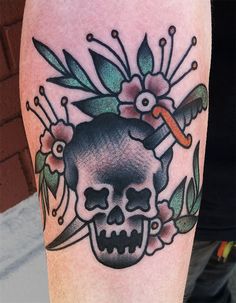
Traditional Skull Tattoo by Mike Adams @ Hold It Down Tattoo
The traditional skull tattoo is perhaps one of the most common designs in tattooing with a meaning that can vary by both the wearer and the culture. Most often the skull tattoo will represent death, but it can also represent the idea that we all die, or that life is short.
However, the traditional skull tattoo has also been known to signify triumph and rebellion. The best example of this symbolism is displayed in the pirate’s flag, or Jolly Roger, which features a skull and crossbones which was flown in defiance of the naval authority of all governments.
To some cultures, the skull symbolizes a celebration of life and the idea of an afterlife. This is especially true in Mexican culture and in the religious beliefs held by Kabbalists, Hindus, and Christians. This particular meaning can be enhanced in the tattoo by including a rose.
Traditional Wolf Tattoos
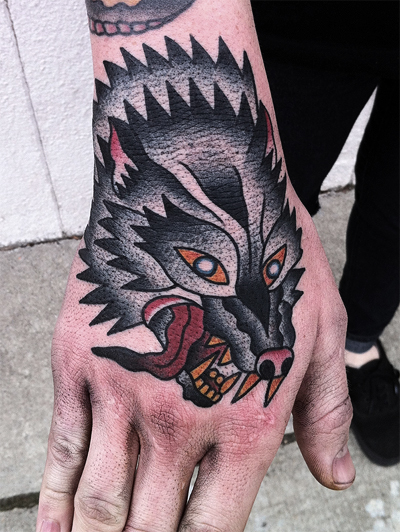
Traditional Wolf by Mike Adams @ Hold It Down Tattoo | Richmond, VA
The wolf is traditionally a symbol of ruthless determination, but it’s also a pack animal for whom family or friends are the keys to survival. Traditionally, wolves represent hunger or hard times, and in some cases greed (as in the common phrase “Wolf at the door”).
In terms of the meaning of the traditional wolf tattoo, it usually represents a hunger for something — be it wealth, success, happiness, or pretty much anything. It can also be used to represent someone who has survived hard times. A traditional wolf tattoo that features a dagger through the head of the wolf can mean that the wearer has overcome hardship or hard times, as well as a vow to never be defeated by personal struggles.
American Traditional Tattoos on Different Body Parts
Let’s see how does a traditional tattoo look on the body. According to the body pain chart, certain body parts hurt less to ink than others, so keep that in mind while scrolling.
American Traditional Sternum Tattoo
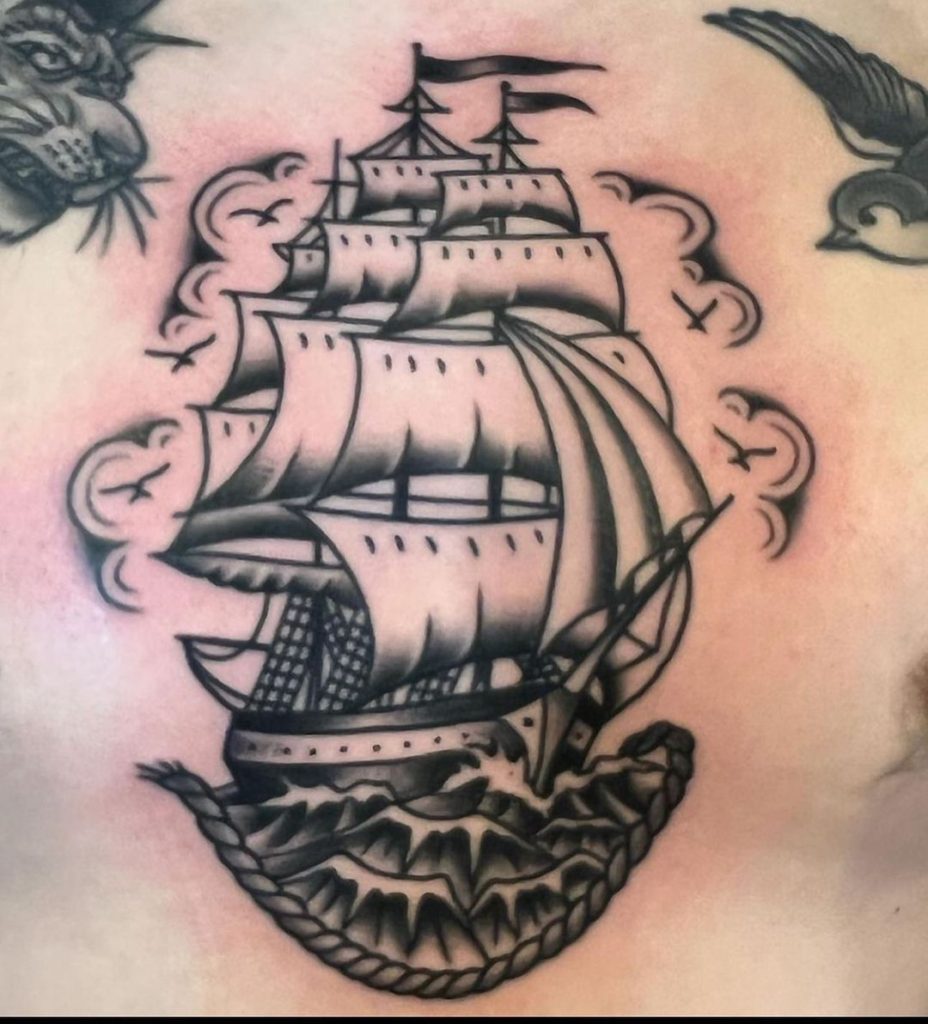
American Traditional Hand Tattoo
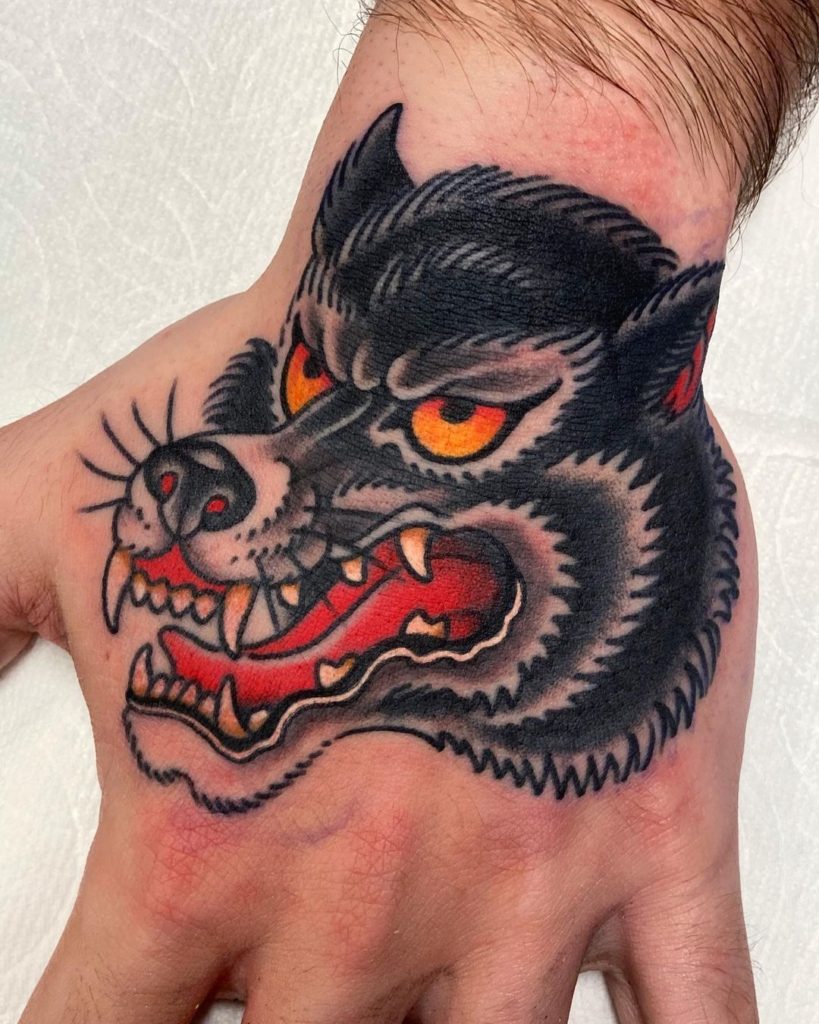
American Traditional Thigh Tattoo

American Traditional Leg Tattoo
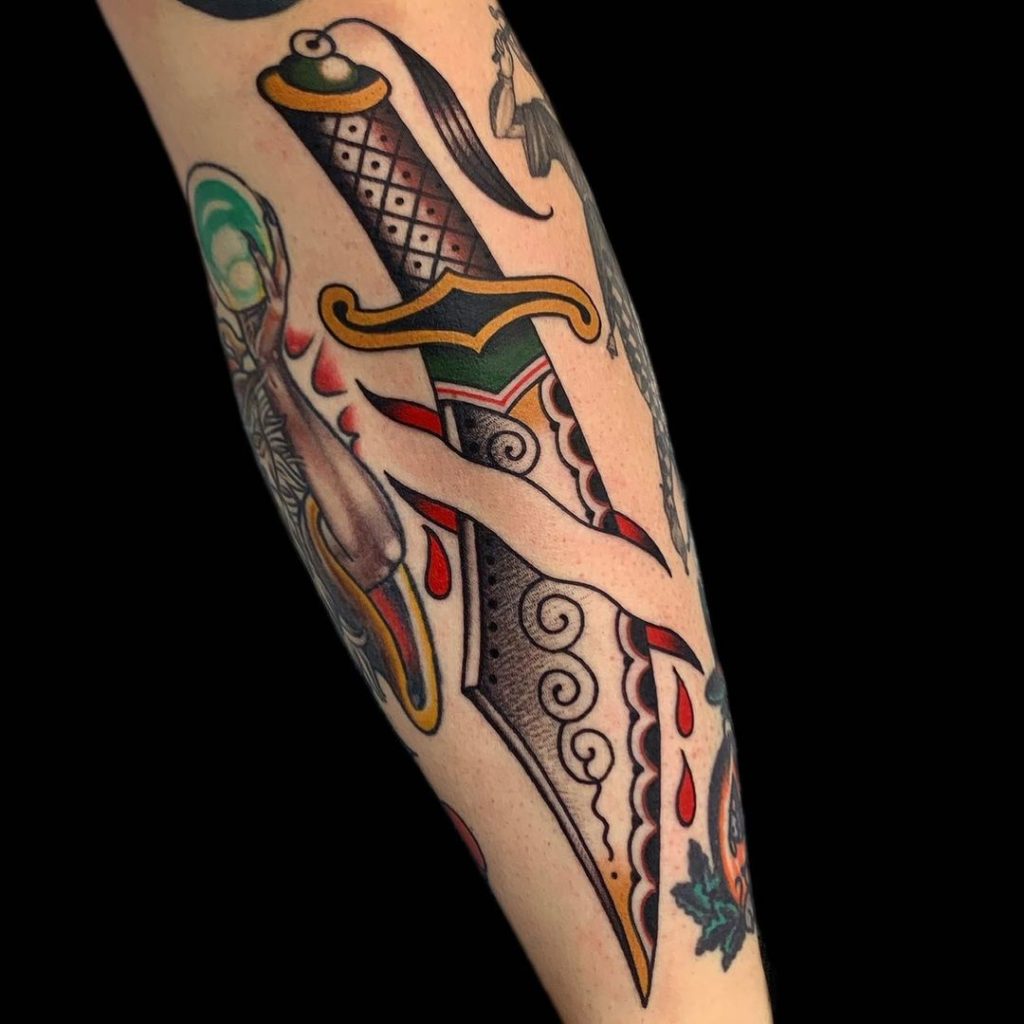
American Traditional Forearm Tattoo

American Traditional Neck Tattoo

American Traditional Elbow Tattoo

American Traditional Breast Tattoo
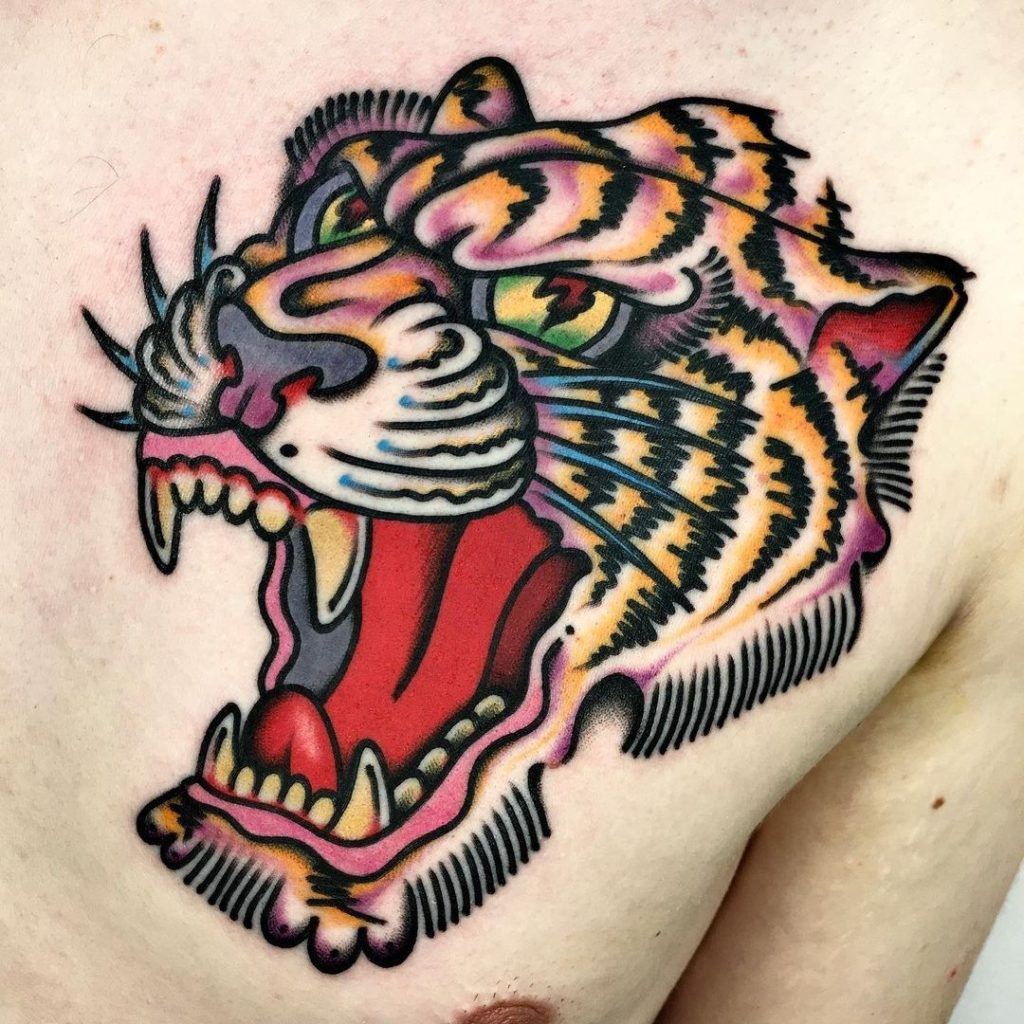
American Traditional Calf Tattoo
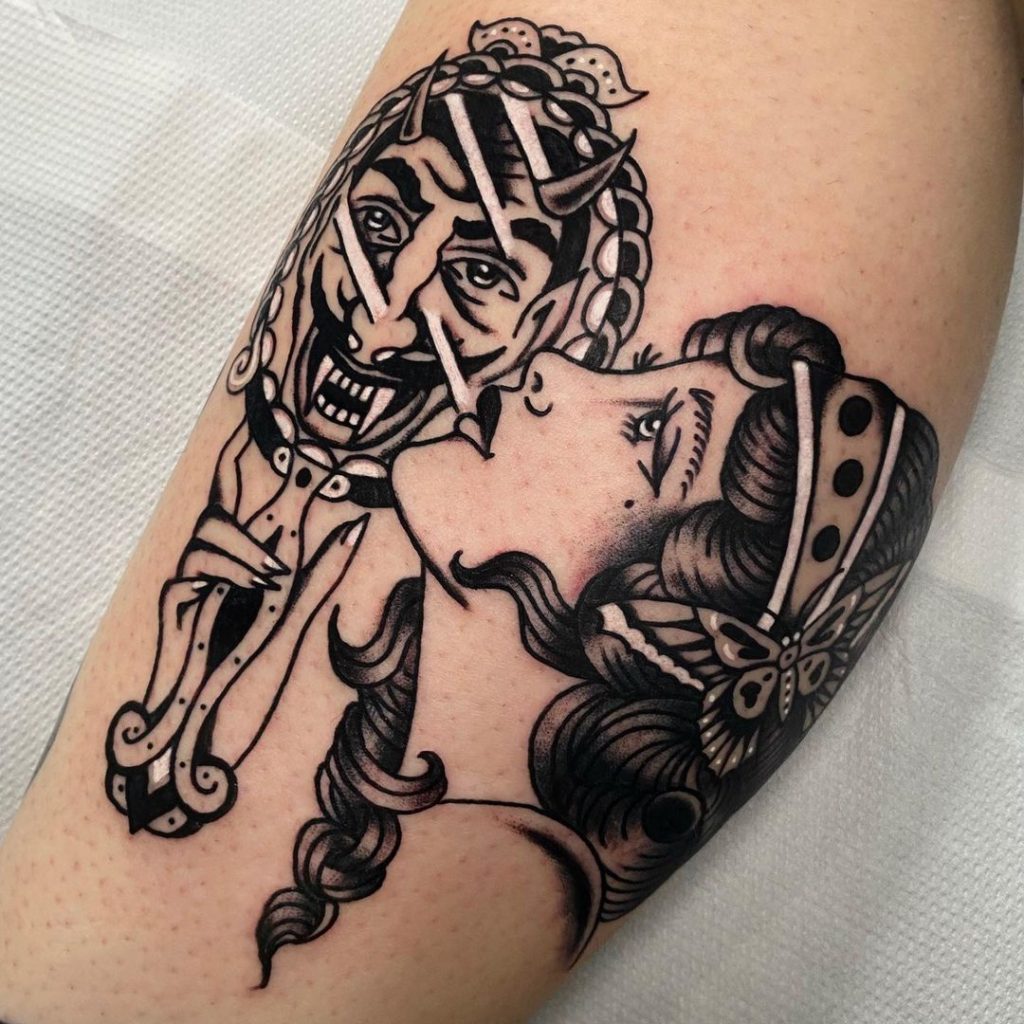
Final Thoughts: Have You Found Your Traditional American Style?
We hope you are feeling inspired and ready to put your very own Traditional American masterpiece. Do you have an idea on where to put it tho? A look into a tattoo pain chart may ease off your contemplation. Everything’s easier when there’s less pain included, right?
